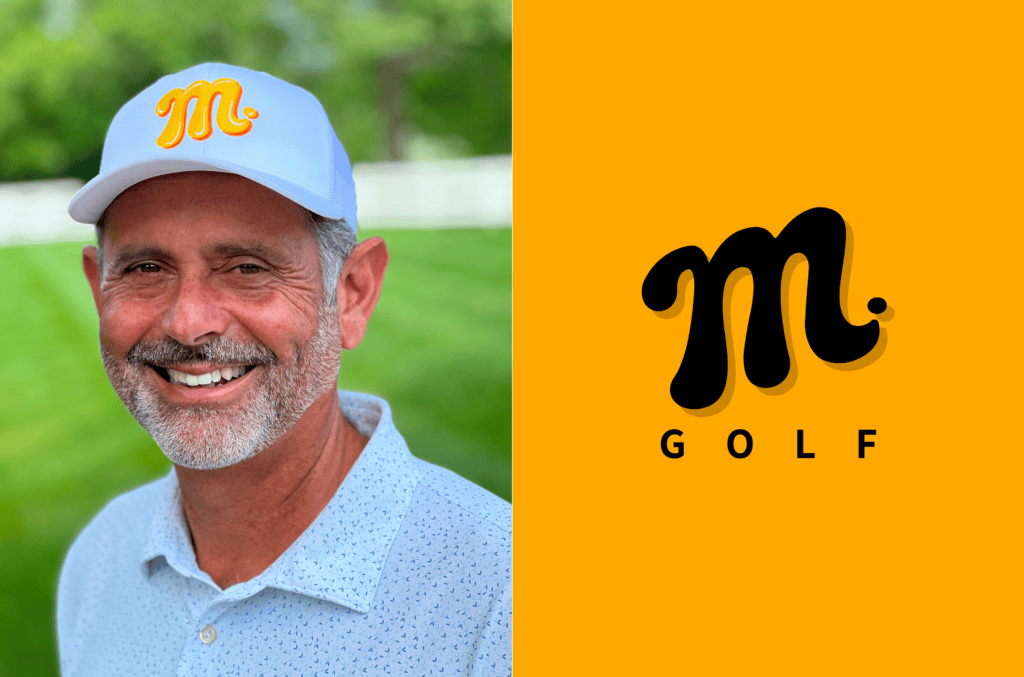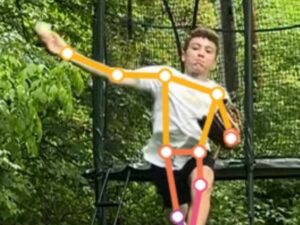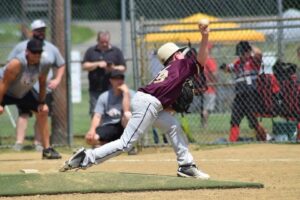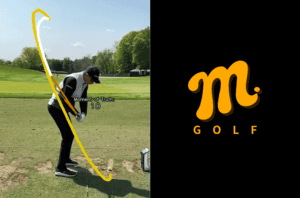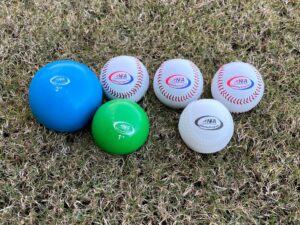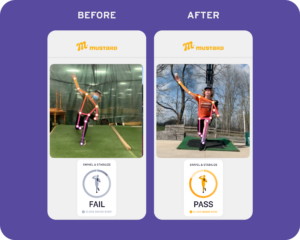One of the biggest differences between amateur golfers and professional golfers is their commitment to a process, beginning with a pre-shot routine. So often, amateur golfers stand over the golf ball and engage with the dozens of different thoughts in their heads: Keep your head down, release your hands, don’t hit the ball in the water, I think someone is watching me … whatever it may be. According to Mustard co-founder and globally recognized high performance coach Jason Goldsmith, a high-handicap golfer can shave strokes off his or her score simply by committing to a process.
“Don’t let the thinking get in the way of the doing,” Goldsmith says. “The more we think about how to perform, the more difficult performance gets.”
Of course, when you’re practicing on the range, you’ll be doing drills and tinkering with your swing mechanics and thinking about how to do so. But, once you step out onto the course, all of those thoughts should stay behind. Here, Goldsmith helps you create a process to help you focus only on what is important, and to troubleshoot when your mind gets carried away.
Building a Pre-Shot Routine
Step 1: Gather Information
“The first thing you need to do in your pre-shot routine is gather information from the environment so you can make a decision about the type of shot you’d like to hit,” Goldsmith says. So, find your ball, identify your lie, check your yardage, assess the wind, acknowledge any obstacles or hazards that may be in your way and identify your target. This is the strategic thinking part of your pre-shot routine. Here, you will need to use the analytical part of your brain to assess shot risk and make a decision based on your previous experience and skill level. Once you pull the appropriate club from your bag, the decision has been made. You are committed to your intended shot and ready for the next step.
Troubleshooting: Golf is a difficult sport. No matter your skill level, bad shots are going to happen. However, the bad shot you made before should not be on the list of things you assess before your next shot. If you let your brain focus on what went wrong in your previous shot to prevent the same from happening with your next, your bad shots will multiply. “Time-traveling to the past and future is a recipe for frustration and struggle on the golf course,” says Goldsmith. “If you’re thinking about playing, and operating from a place of fear and doubt, you’re not playing anymore, and that prevents you from being your most athletic self.” Instead of focusing on past mistakes, anchor yourself to the present by relying on your pre-shot visualization routine.
Step 2: Ask Yourself, “What Does a Good Shot Look Like?”
“The second step in your pre-shot routine is asking yourself the question, ‘What would a good shot or a good putt look like?’” Goldsmith says. “You want your brain to create a visual image to give your body something to be 100% committed to.” Some people do this by using words to create a story in their mind. Others create an actual visual, or ask themselves, “What does a good shot feel like?” You can’t over-do this part of the process. See it, feel it, hear it. Imagine your shot flying through the air, landing exactly where you want it to and running down the fairway or up onto the green. Imagine the sensation in your body when you hit that shot. Commit to that intended shot before you address the ball, and imagine what it will feel like to execute it. “Your imagination of the intended shot gives your body the information it needs to perform that specific action,” Goldsmith says. “Then, you’re not standing over the ball, thinking about what you want it to do, because you’ve already done it.”
Troubleshooting: In this step, you want to imagine a good shot, not a perfect swing. Goldsmith often says, “Play golf, not golf swing.” Many golfers take several practice swings before each shot, thinking it will reinforce a movement pattern and create the shot they want. However, Goldsmith says it is the shot you create in your mind that produces the technique that allows that shot to happen. “People get stuck on the idea of a perfect, repeatable golf swing, but really, you want your swing to adapt to your intention, because no two golf shots are ever the same,” Goldsmith explains. “If you’re hitting the same shot over again, you’ve done something really wrong.” It is unlikely that skill acquisition will happen mid-round, and Goldsmith says clinging to a hit-it-and-fix-it mindset while actually playing golf will trap you too much in your head to produce the outcomes you want.
Step 3: Focus on Your Target
“Step 3 of your pre-shot routine is focusing your eyes on the ball while allowing your awareness to drift to the target,” says Goldsmith. “Think of a shortstop who has the intent to throw the runner out at first base while he or she is still focused on the process of fielding a ground ball.” Your target is all you should be aware of at this point; if you’re still hearing a dialog in your head when you stand over the ball, Goldsmith recommends stepping away, re-imagining your intended shot, then stepping back in. “If you’re hearing voices giving you swing thoughts, you are internally focused and will likely hit a mediocre shot,” Goldsmith says. “You want your focus externally located on the target.”
Troubleshooting: It may be rainy and windy. The bunkers may be hard and the greens may be choppy. But none of that is within your control, and focusing on it will drain your energy and multiply your mistakes. What you can control, however, is your breath. Breathing exercises don’t have to involve complicated counts and holds to be effective; all they need to do is divert your attention from the thoughts in your head back to the present moment. “Simply take a few seconds to focus on your inhale and your exhale,” Goldsmith suggests. “Consciously focusing on your breath is often enough to quiet your internal dialog so you can refocus your attention on the shot you intend to hit.”
Need a reminder to stay with your pre-shot routine? Jason Goldsmith and PGA Tour golfer Jason Day, in partnership with Bridgestone Golf, created MINDSET. MINDSET golf balls are adorned with a visual cue scientifically designed to help you separate analytical thoughts from athletic performance so you can stay focused on your process and achieve the best possible outcomes.
If you’d like more great content from Mustard Golf, and you’d like to evaluate and improve your own golf swing, download the Mustard Golf app today.
Click HERE if you’d like to submit your pitching delivery or golf swing for use on #TeamMSTRD’s social media channels.

